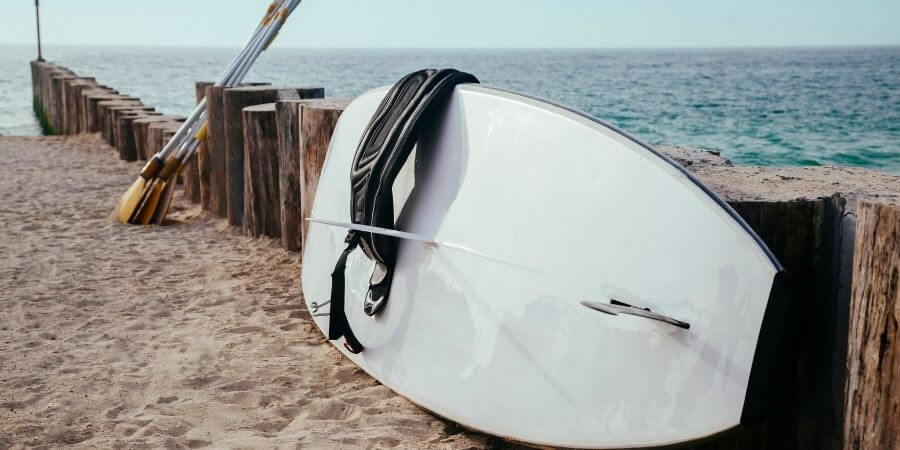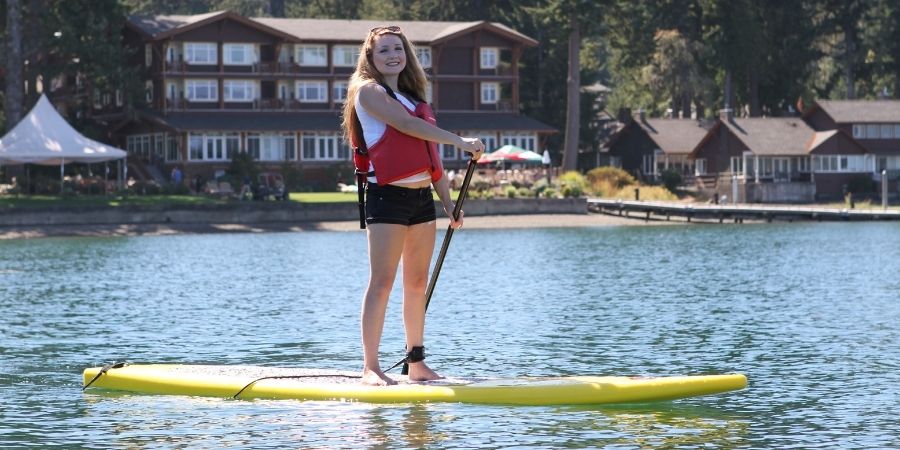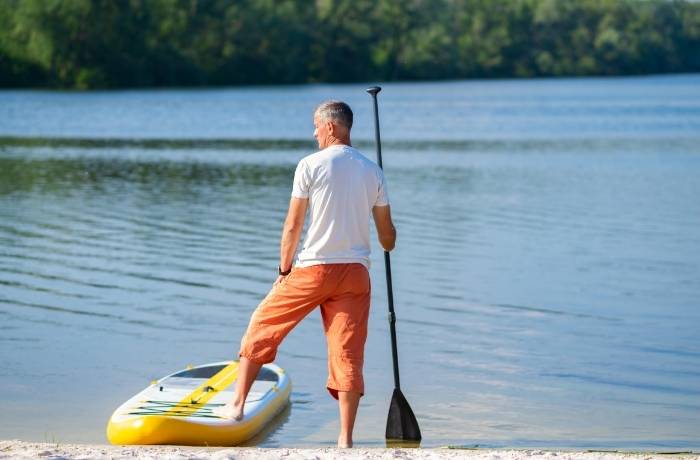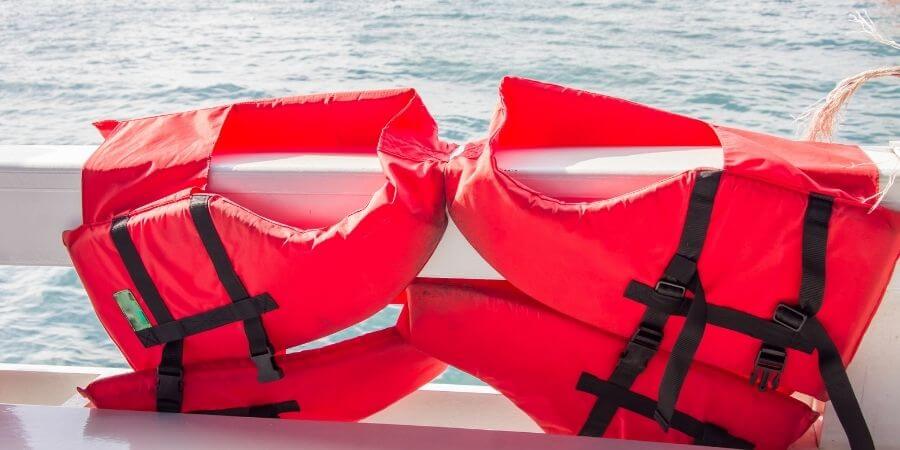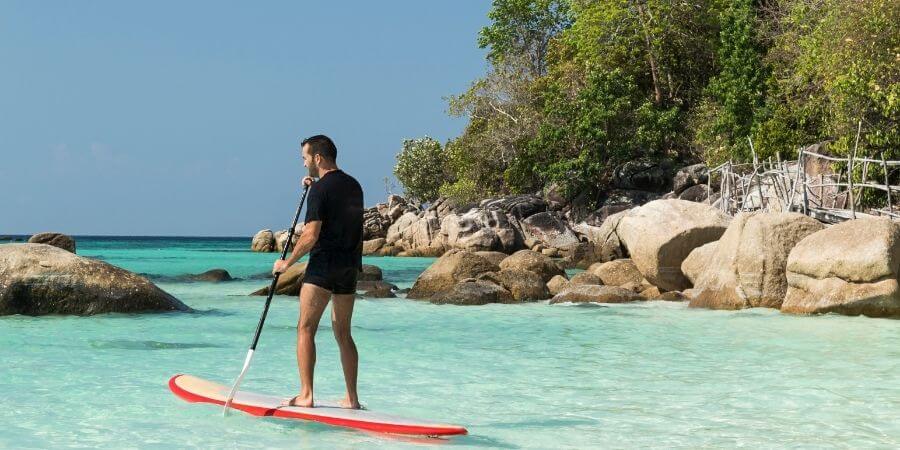Getting the right paddleboard size is essential if you want to enjoy your SUP-ing experience. You don’t want to drag in the water or ride too slow.
In this guide below, we’ll discuss how to choose the right paddle board size according to your height and weight. Keep reading because we’ll analyse other factors, too, such as your purposes and experience level.
Table of Contents
What Size Paddle Board Do I Need for My Height?
The rule of thumb is to add 4-6 feet to your height to get the correct paddleboard size according to your height.
As such, a 6’ man would need at least a 10-feet paddleboard.
Pro tip: To get the correct size, measure the paddleboard from the tip to the grip’s exterior edge.
Pro+ tip: This is just a rule of thumb based on some ideal figures. The reality is different because most people can ride on most paddles. What that means for leisurely SUP-ers is that you can purchase just one paddle to share with your other family members.
Pro++ tip: If you’re passionate about paddleboarding and don’t want to share, that’s fine too. But in this case, you may want to look at even more precise measurements.
Surfing SUPs: Your Height + 3-4 Feet
If you’re using your paddleboard for surfing, go for a smaller length. In this case, just add 3-4 feet to your height. So, if you’re 6’ tall, your SUP should be at least 9-10 feet long.
Best surfing SUP size: 9’-10’
Yoga SUPs: Your Height + 4-6 Feet
Yoga SUPs should be more stable, which means they should be wider. Add 4-6 feet to your height to gauge the minimum length for Yoga sup. The same goes for flat-water paddling SUPs.
Best yoga SUP size: 10’-12’6”
Racing SUPs: Your Height + 6-8 Feet
Racing on a paddleboard is exhilarating, but only if your SUP can catch enough speed. In this case, add 6-8 more feet to your height. That means you need at least a 12 feet long racing SUP if you’re 6’.
Make sure your racing SUP is light but rigid so that it can glide seamlessly through the waves. Besides, remember that this paddleboard is narrow, so less stable.
Best racing SUP size: 12’6”-14’
What Size Paddle Board Do I Need for My Weight?
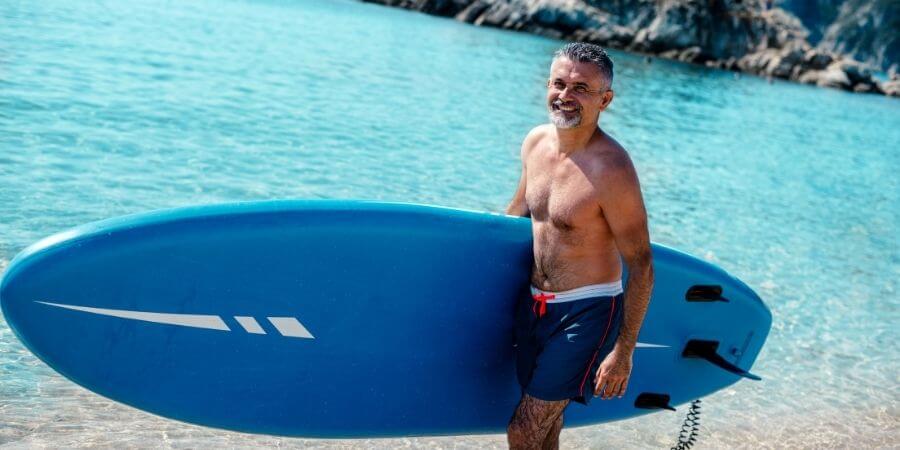
Paddleboards come in different shapes and sizes, but each has a maximum weight capacity. You can find this figure in their official specs.
Side-note: There’s a common myth running in the SUP enthusiasts’ world, saying that some people are too light for paddleboarding. But that’s just a myth. The only thing you should watch out for is the maximum weight capacity.
Riding a paddleboard not built for your weight is problematic because the SUP will ride lower. As such, it will drag in the water, and you’ll have more difficulty paddling.
Remember: When you calculate the right paddleboard weight, consider the other people you’re planning to SUP with. Your SO, kids, and even your dog can add a significant drag to a SUP. Besides, you should also consider the equipment and food you’re bringing on the SUP with you.
That said, which is the right SUP weight?
Unfortunately, there’s no fixed SUP size depending on your weight. This number doesn’t just rely on how heavy you are, but also:
- How well you can keep your balance
- The provisions you’re taking with you
- The waters and conditions you’re paddleboarding in
- The SUP length
- The purposes for which you’re using the paddleboard
Thus, if it’s your first time out paddle boarding, you might feel like you’re losing balance. You’ll even fall in the water for your first tries.
But, if you need a rule of thumb, here it is:
One litre of the paddle board’s volume can float 1 kg of your weight, aka 2.20 pounds.
Here’s what that means:
- If you’re a beginner or need a paddleboard for flat-water paddling or Yoga, consider an all-around board of 250-300 L.
- If you want a paddleboard for surfing or racing, consider one with less volume than your weight.
In Conclusion
You can use the calculations above to gauge whether a paddleboard would fit your body shape. However, body shape isn’t the single factor determining whether a SUP is suitable for you.
Your needs are the essential factor from this perspective.
So, avoid purchasing a SUP you hate and losing money in the process.
Read these articles here and here about getting the right paddle board for your needs before going any further. These guides discuss all factors relating to your needs, from weather conditions to experience level and type of paddleboarding you’ll do.
